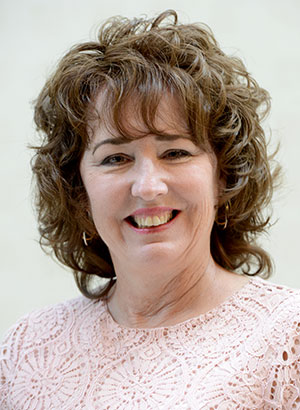As early autumn temperatures have reached summer-like highs, some K-12 school districts have chosen to close schools for a day or two while others have released students and staff early due to dangerously high classroom temperatures. Scattered schools in New York, Michigan, Ohio and Connecticut were among those closing doors to this extreme, record-breaking heat.
“It’s a weather emergency — just like a snow day,” said Wendy Hord, NYSUT health and safety specialist.
Hord said that indoor heat and humid temperatures can cause heat-related illnesses such as cramps, heat exhaustion, loss of concentration and aggravation of certain medical conditions like asthma.
 School nurse Linda Dimick (pictured), a member of the Monroe BOCES United Professionals, has tended to students who have passed out from the high school temperatures. As a 23-year veteran of her health care profession, Dimick said high indoor temperatures can also trigger seizures; negative behaviors, such as less tolerance; hinder performance; cause dehydration; and result in truancy.
School nurse Linda Dimick (pictured), a member of the Monroe BOCES United Professionals, has tended to students who have passed out from the high school temperatures. As a 23-year veteran of her health care profession, Dimick said high indoor temperatures can also trigger seizures; negative behaviors, such as less tolerance; hinder performance; cause dehydration; and result in truancy.
Taking students outside the building can cause even more overheating.
Dimick’s recommendations? “Unlimited hydration, and don’t be hesitant about contacting the school nurse,” she said. Dimick is a new member of NYSUT’s Health Care Professionals Council, an advocacy group for NYSUT’s 15,000 health care members, led by United Federation of Teachers health care leader Ann Goldman.
In addition to the health concerns associated with the high classroom temperatures, Hord said, “No learning is going to go on in conditions like this.”
Many schools do not have air conditioning to keep temperatures cool and alleviate humidity. Without A/C, using a vent will only bring in hot air. Without a vent, the lack of air movement will increase the heat.
The heat load of a building – including windows, and exposure to the sun – increases indoor temperatures, Hord said. “It ratchets it up.”
The New York State Education Department does not have a temperature limit for heat; it has mandated a 65-degree limit for coolness. Hord said SED has notified school districts that temperature extremes need to be part of every district’s emergency plan.
Meanwhile, it’s not just students being affected by the heat. Hord said that some educators have also reported passing out due to extreme indoor heat while on the job.
Local, statewide and national unions have long been the watchdogs of workers’ health and safety on the job. With that in mind, NYSUT is encouraging educators and health care professionals — in K-12 and on college campuses — who work in schools to track temperatures for two weeks as part of the Union’s Campaign to End Overheated Schools. Go to www.nysut.org/temperaturelog. The data collected will help generate a report on the problems and help the call for remedies.
The downloadable “Room Temperature Record” log on this webpage has space for educators or their students to track classrooms temperatures and the times that they were recorded. Here are the instructions:
- record the temperatures twice a day, in the morning in the afternoon;
- record the temperatures for two weeks (consecutive or nonconsecutive);
- make sure to include the dates for each day of the week; and
- keep windows closed before taking the classroom temperature.